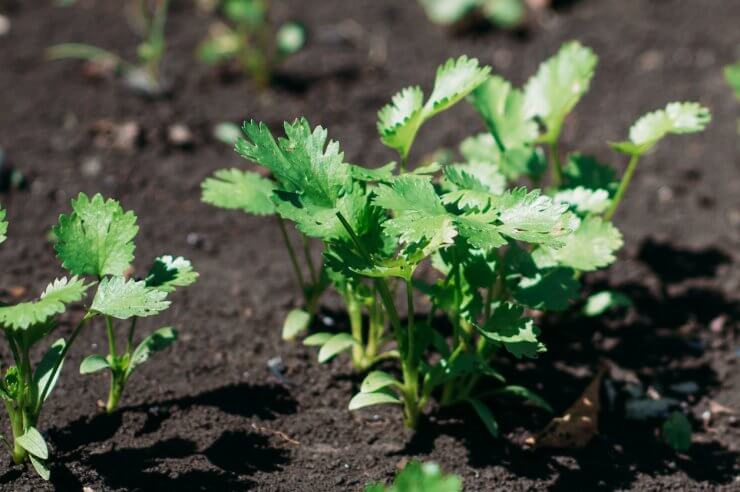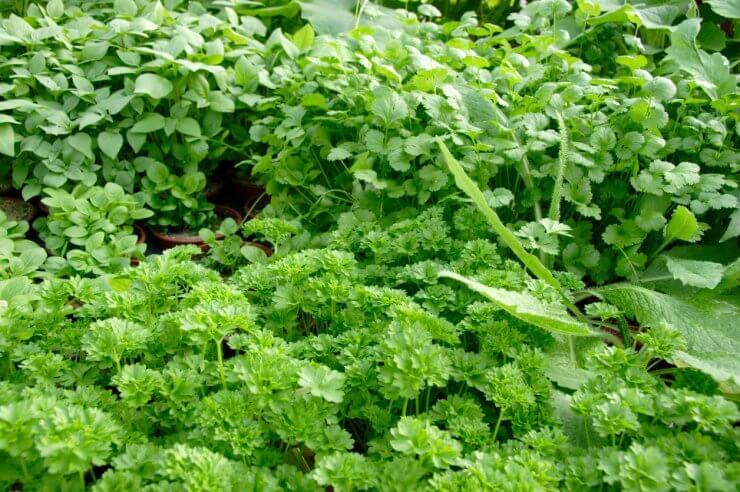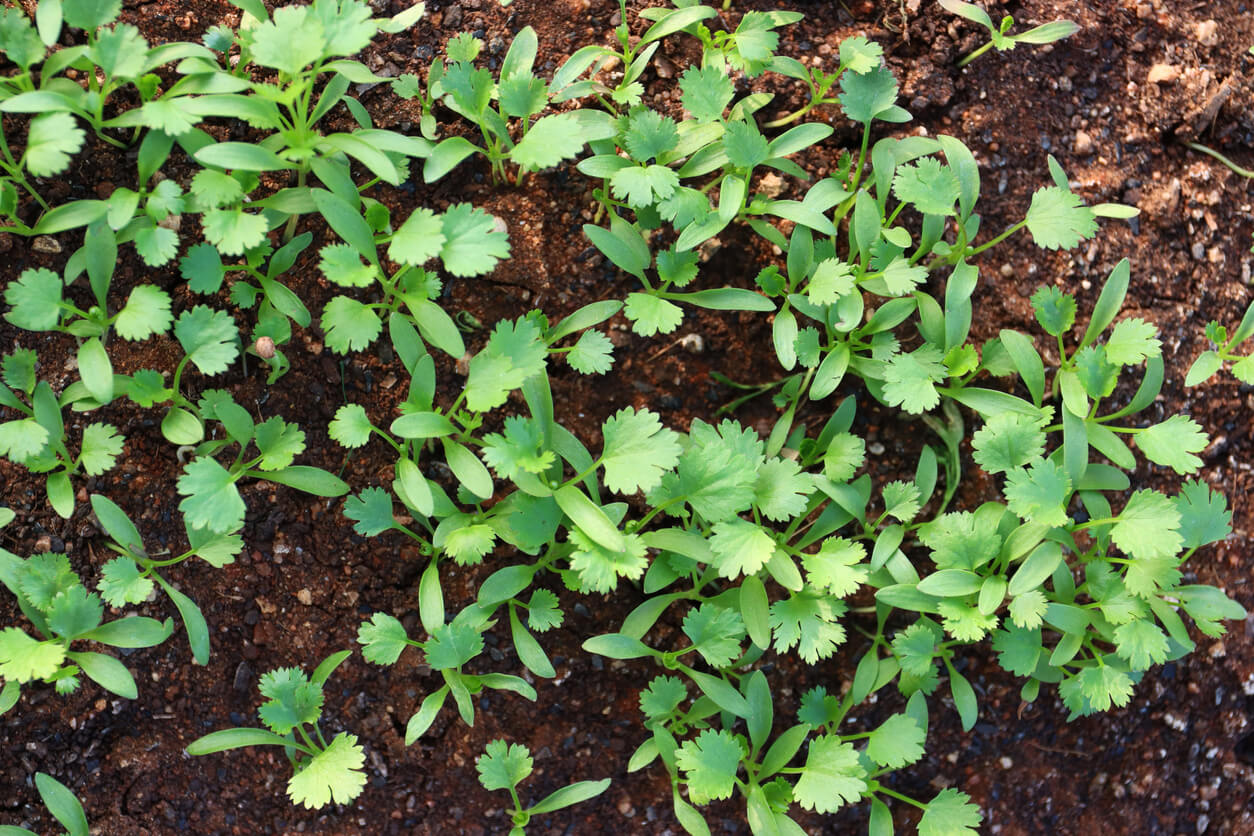
Cilantro growing in the ground in a garden
Planting
Cilantro loves sunshine and loamy, well-draining soil, but cilantro is delicate and also needs part shade, especially in the afternoon sun. Cilantro does best in soil that has a pH between 6.2 and 6.8. As long as the soil drains well, cilantro plants seem to be fairly adaptable.
Cilantro can thrive in USDA Hardiness Zones 2 to 11. However, the higher the zone number, the more careful you need to be that your cilantro plants get some shade from the afternoon sun. Cilantro prefers cool weather, and once the temperatures rise it will quickly bolt and produce seeds.
The keys to having happy cilantro are sunlight, well-drained soil, and cool temperatures or shade. If you can provide those things, you can grow cilantro just about anywhere.
Cilantro Spacing
In general, space your mature seedlings about 6 inches apart with 12 inches between rows. Cilantro grows quickly, but also turns to seed quickly. If you want fresh cilantro leaves all season you should plant new plants or seeds every three to four weeks starting in late spring. So, plan your cilantro plot accordingly.
Cilantro also has a tendency to reseed itself. Some gardeners prefer to leave some room between cilantro and other plants to give the volunteers space to grow. Others like to plant cilantro among other plants, such as tomatoes and spinach, where cilantro’s flowers can attract beneficial insects.
Companion Planting

Herb garden with parsley, basil, and cilantro
Cilantro is a friendly garden plant. Its delicate white and pink flowers attract beneficial insects that are not only beautiful, but protect your plants by eating pests. In turn, bushy plants such as tomatoes—or even tall flowers like cosmos and zinnias—can give cilantro plants the partial shade they need to thrive.
You could also consider planting a salsa garden: tomatoes, onions, jalapeños, and cilantro combine for a fresh, spicy treat.
Basil, mint, yarrow, dill, and tansy all work well with cilantro. But keep fennel and cilantro apart. In fact, fennel is best grown apart from most other plants. Aphids tend to pester cilantro, so plant sweet alyssum, coreopsis, and chervil—which all deter aphids—to minimize damage.
Raised Beds

Cilantro growing in a raised bed
A raised garden bed or planter is an excellent option for growing cilantro if you don’t have soil that’s ideal for cilantro (heavy clay soil, for example). Raised beds also help with drainage, which is essential for a healthy cilantro plant. You can even buy raised beds or build one yourself to fit your space.
Watering and weeding will be easier if you have your cilantro plant in a raised bed or planter. It’s a good alternative to growing in open land. And if you fill a raised bed with packaged garden soil, you’re providing a cleaner and healthier environment for your plant from the outset.
Packaged garden soil means less weeding than you’d have from digging a hole in the ground; and with a raised bed or container, there’s less bending down to do your weeding!
Cilantro is a gardener-friendly plant, and it will grow well in open ground—as long as it has plenty of sunshine, good drainage, some protection from the heat, and the right pH (6.2 to 6.8). If you can provide those conditions, consider incorporating cilantro into your garden.
How do you grow your cilantro—in open land, in raised beds, or in containers? Why do you prefer your method? Please tell us your tips and tricks for growing great cilantro!


 Previous
Previous

